It won't be long before we might see a new third-generation successor of Microsoft's Surface Book lineup. However, I do have a few suggestions about its successor that might be worthy to be given a second thought.
 |
| Surface Book 2 in Laptop mode and Presentation mode. Also pictured are the optional Surface Dial and Surface Pen accessories. Photo: Microsoft |
Believe it or not, Microsoft's Surface Book 2 (SB2) has been with us for quite some time now. Unlike the Surface Pro or Surface Laptop line that sees a refresh every year, Microsoft really takes some sweet time with the Surface Book line. We first saw Microsoft's pen-supported detachable touchscreen laptop lineup all the way back in October 2015. A year later, they introduced a performance-orientated Performance Base variant, equipped with a proper Nvidia GeForce dedicated graphics card unit (dGPU). Fast forward to 2017, and the all-new second-generation SB2 was launched and it is still on sale to this day.
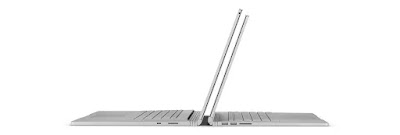 |
| 13.5" SB2 (right) and 15" SB2 (left). Photo: Microsoft |
With the SB2, you now got two choices of 13.5" or 15" screen. You also got an array of setups depending on the chosen RAM and internal storage variant. From the cheapest setup of 13.5" 8GB RAM/128GB storage with Intel i5-7300U and integrated Intel UHD Graphics 620 to the most expensive setup of 15" 16GB RAM/1TB storage with a beastly combo of Intel i7-8650U with integrated Intel UHD Graphics 620 and dedicated Nvidia GeForce GTX 1060 6GB, it's a feast of configuration for just about everyone... almost.[1]
Unfortunately, the SB2 is not what you'd call "affordable" since this hybrid laptop is aimed squarely at Apple's MacBook lineup. In Malaysia for example, the cheapest SB2 will set you back a hefty MYR 6,899 for the 13.5" Intel i5-7300U 8GB/256GB RAM/storage variant.[2] Let's not forget that the mentioned price is just for the SB2 itself. Accessories like Surface Pen, for instance, is an MYR 399 option.
- WHOA! That is utterly expensive, even for the base model!
Honestly speaking, at that kind of price, there are a plethora of pen-supported touchscreen laptops that can give you solid firepower for less money such as Lenovo's Yoga 730 or Acer's Spin 5 Nvidia and Switch 7 Black Edition. It's only when you take a second look at the SB2 in terms of the technology packaging where you begin to understand the justification of the price tag. The integrated Intel variants aren't much interesting, but the Intel-Nvidia combo definitely begs a look.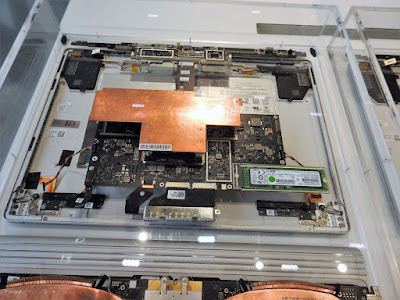 |
| Inside the screen of the 13.5" variant. Photo: Mashable[3] |
Unlike other laptops, the integrated CPU and dedicated GPU didn't reside with each other inside the same panel. What Microsoft has done here is separate the Intel CPU and Nvidia GPU and put them inside two different panels. The Intel CPU only resides behind the screen, while the Nvidia GPU resides under the keyboard base. Not only that, Microsoft even took the liberty of creating separate batteries for both panels. Using the 13.5" Intel i5 variant as an example, it has a combined battery capacity of 69Wh. 18 Wh of it comes from the screen, while the remaining 51 Wh comes from the base.[4]
- Wait, what does all of that even mean?
What this means is that when you detach the SB2 and use it purely as a tablet, it only relies on Intel's integrated CPU with its 18 Wh battery. The Nvidia GPU and the other 51 Wh battery is only accessible when you reattach the screen back onto the base. This means that you are getting separate battery life from the screen and laptop. The SB2 can run up to a combined battery life of 17 hours, with 5 hours coming from the screen alone and the other 12 hours spared from the base.[4]
It somehow reminds you of Motorola's Moto Z lineup and its Moto Mods capability. When you attach your own Moto Z smartphone to a certain power pack mod and run it under Efficiency Mode, it will use the battery from the mod first before switching to the battery from the smartphone itself. A similar concept can be applied to Surface Book, though I wouldn't dare to comment much on that since I never personally own one to date. All I can dare to say is that once you run out of the juice from using the SB2 as a tablet, you can simply reattach it back to the base and continue where you left off.
- Wow, that is some proper engineering feat right there. No wonder why it cost so much. But hasn't it been like two years now since the SB2 was first launched?
That is the original point of this article. As mentioned in the beginning, the original Surface Book was launched back in October 2015. Two years later in October 2017, the current second-generation SB2 was launched. It means that assuming Microsoft retains the two year launch period, we are not that far away from a world premiere of the third generation successor.
- But hang on a minute, three months from now is not that far off. It's just around the corner.
While that is correct, I do have some reservations about that. It probably won't be enough to execute any last-minute change or adjustment if Microsoft is adamant about launching the Surface Book 3 (SB3) in October 2019. However, considering that Microsoft's relationship with Intel is not going all that well at the moment, anything can happen even during that period. There could be even a possibility where we might not be seeing the SB3 until next year. With that in mind, I do think that I still got plenty of time for some suggestions on the SB3.
First suggestion: Turing Nvidia GPU.
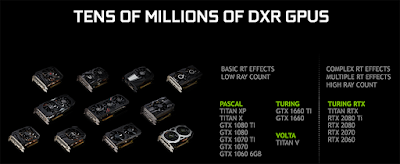 |
| A list of Nvidia dGPU with the Ray Tracing feature. Photo: Nvidia |
While the GTX 1050 2GB and GTX 1060 6GB is still proving to be capable enough for everyday gaming and heavy multitasking today, it has been three years since the GTX 10 Series was first launched. More to the point, Nvidia had already announced the Turing-based RTX 20 Series from September 2018 and, more recently, the GTX 16 Series alongside the refreshed RTX 20 Super Series in February 2019 and July 2019 respectively.
Here's the thing: We already know that Microsoft can fit the GTX 1050 2GB inside the 13.5" SB2. So why don't they consider using the GTX 16 Series for the 13.5" SB3? After all, it is still under the GTX family despite the different architecture. As for the 15", Microsoft can either use a higher variant of the GTX 16 Series or go mental and use the RTX 20 card. If Microsoft decided to do the latter, it is definitely safe to say that they have invented a desktop-grade detachable laptop, that is unless other OEM beat the queue and do it first.
I know that the current SB2 is already far too expensive in the first place and putting a Turing Nvidia dGPU will only make it even more expensive than before. However, considering the new features on Turing architectures such as Ray Tracing[5], the expected price should well be justifiable.
Second suggestion: AMD Ryzen CPU.
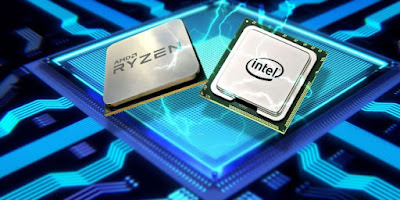 |
| Illustration: MakeUseOf |
As mentioned earlier, Microsoft and Intel are having a rocky relationship at the moment, though it isn't further mentioned why such a situation happened. Nevertheless, Microsoft has decided to diversify the Surface brand by welcoming AMD and Qualcomm into the family. According to Petri, Microsoft is testing a Surface Laptop with an AMD CPU while at the same time working closely with Qualcomm on developing a specially designed custom Snapdragon SoC specifically for Windows 10, probably for the next Surface Pro.[6]
We put Qualcomm aside for the moment since ARM is not on topic. The AMD joint venture does beg an interesting proposition since they are still on fire with the Ryzen lineup. Since AMD first launched their new integrated CPU back in February 2017, it has been steadily outpacing Intel in terms of performance. Various gameplay comparison on YouTube shows that an integrated Ryzen has beaten an integrated Intel with equal or higher FPS count and lower CPU usage, even with lower-tier variants.
Seeing AMD's superb capability of the Ryzen, OEMs like HP and Acer quickly offers several laptops with Ryzen configuration. It also prompts ASUS to launch the TUF, a more affordable gaming laptop series with an AMD-Nvidia combo. As of right now, only ASUS offers such wildly shocking configuration on any laptop. Since Microsoft is testing an AMD Surface Laptop as mentioned, perhaps then that they can consider the idea of using that CPU for the SB3. If Microsoft decided to power the SB3 with the same CPU-GPU combo as the aforementioned ASUS TUF laptop, Microsoft can easily be the first to offer such marriage in a pen-supported touchscreen laptop.
Third suggestion: Bigger battery capacity.
It is strange to mention this point, but Microsoft should consider giving a bigger battery for the SB3. For your information, the battery for the base model 13.5" Intel i5 SB2 is exactly the same as the first-generation Surface Book. I am aware that the battery for the 15" Intel i7 SB2 is bigger than the Surface Book Performance Base, but the increase is not that significant with just an extra 9 Wh than before.
If Microsoft decided to use the newer Turing-based Nvidia dGPU, that would require much more firepower than before. At the very least, a much bigger battery inside the base should be a worthy consideration. I wouldn't really mind much about the battery inside the screen if Microsoft decided to opt for the AMD CPU. As Intel is still relying on 14nm technology, AMD has already passed them with the 7nm Zen 2 Ryzen. In simple terms, the lower the nanometer rating, the more efficient the battery management is. In return, you get a longer battery life.
If you are not aware, only four Surface models to date that features optional LTE connectivity. Those models are Surface 2, Surface 3, Surface Pro 2017, and Surface Go. To most people, it is not a necessity since they are mostly connected via WiFi at all times. For some people who always spend time on the road and need a stable Internet connection when there is no available WiFi network, that is where built-in LTE connectivity comes in. After all, there are a number of mobile data plans that provide unlimited data usage at a certain price. In Malaysia at least, there is the Digi Infinite 100 or 150, U Mobile GX50, Yes Konfem Unlimited Postpaid, and Unifi Air.
Seeing how capable the SB2 is for creators and enthusiasts alike, I can see the appeal of it as if I am a doujin artist and a gamer that travels to various ACG events to promote my artwork and commission while at the same time playing a multiplayer game with fellow friends. Relying on the event hall's WiFi connection won't be enough as there are other attendees who will also use it at the same time, thus interrupting the online gameplay. It makes complete sense to have an unlimited mobile data plan of your own in your LTE-enabled laptop so that no one can interrupt your connection.
Fourth suggestion: LTE connectivity.
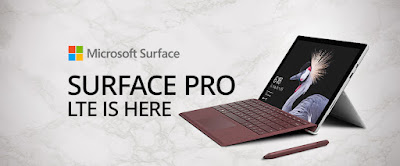 |
| Photo: PCM Blog |
If you are not aware, only four Surface models to date that features optional LTE connectivity. Those models are Surface 2, Surface 3, Surface Pro 2017, and Surface Go. To most people, it is not a necessity since they are mostly connected via WiFi at all times. For some people who always spend time on the road and need a stable Internet connection when there is no available WiFi network, that is where built-in LTE connectivity comes in. After all, there are a number of mobile data plans that provide unlimited data usage at a certain price. In Malaysia at least, there is the Digi Infinite 100 or 150, U Mobile GX50, Yes Konfem Unlimited Postpaid, and Unifi Air.
Seeing how capable the SB2 is for creators and enthusiasts alike, I can see the appeal of it as if I am a doujin artist and a gamer that travels to various ACG events to promote my artwork and commission while at the same time playing a multiplayer game with fellow friends. Relying on the event hall's WiFi connection won't be enough as there are other attendees who will also use it at the same time, thus interrupting the online gameplay. It makes complete sense to have an unlimited mobile data plan of your own in your LTE-enabled laptop so that no one can interrupt your connection.
- So at the end of the day, your suggestion is about dGPU, CPU, battery, and LTE. What's your toast?
Whatever decision Microsoft have planned in store, I am hoping that the SB3 would continue where the SB2 have left at being a real premium detachable touchscreen laptop with proper pen support and monstrous battery life. Yes, the price is not reachable for most people, but it won't stop anyone, including me, from dreaming of owning one. It will only be a matter of time before another OEM can come up with a worthy Surface Book alternative for a cheaper price.
REFERENCES
[1] Surface Book 2. Wikipedia. Retrieved 18 July 2019.
[2] Chapree, C., Law, J., & Chapree, C. (2018). Here Are The Prices For Microsoft Surface Book 2 In Malaysia: Available From 15 March Onwards (UPDATE). Lowyat.NET. Retrieved 18 July 2019.
[3] Ulanoff, L. (2017). Why Microsoft turned the Surface Book into a 15-inch 'beast'. Mashable. Retrieved 18 July 2019.
[4] Forrest, E. (2017). Microsoft Surface battery capacity - a complete list. Surface Tip. Retrieved 19 July 2019.
[5] Ray Tracing, Your Questions Answered: Types of Ray Tracing, Performance On GeForce GPUs, and More. (2019). Retrieved 19 July 2019.
[6] Microsoft Looks to Diversify Chips in Upcoming Surface Products - Petri. (2019). Petri. Retrieved 19 July 2019.
Would you like to see a new generation of Surface Book coming or are you comfortable with the current Surface Book 2? Let us know in the comment section down below.
#P2P
If you like this article and want to support my work, do me a favour by supporting me at Ko-fi. Your support is deeply appreciated and will serve as a motivation for me to keep this blog growing bigger and better in the future.
If you like this article and want to support my work, do me a favour by supporting me at Ko-fi. Your support is deeply appreciated and will serve as a motivation for me to keep this blog growing bigger and better in the future.
Click on the banner below to show your support.

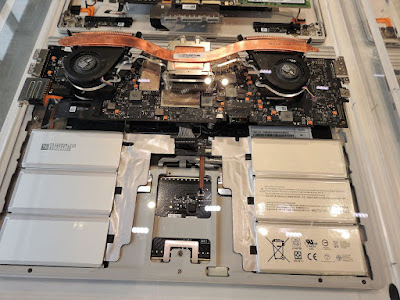
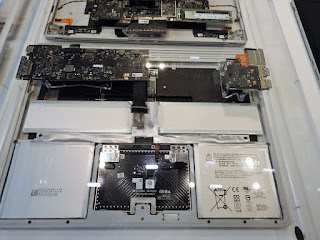

Post a Comment
What do you think of this post? Share your thoughts with us.